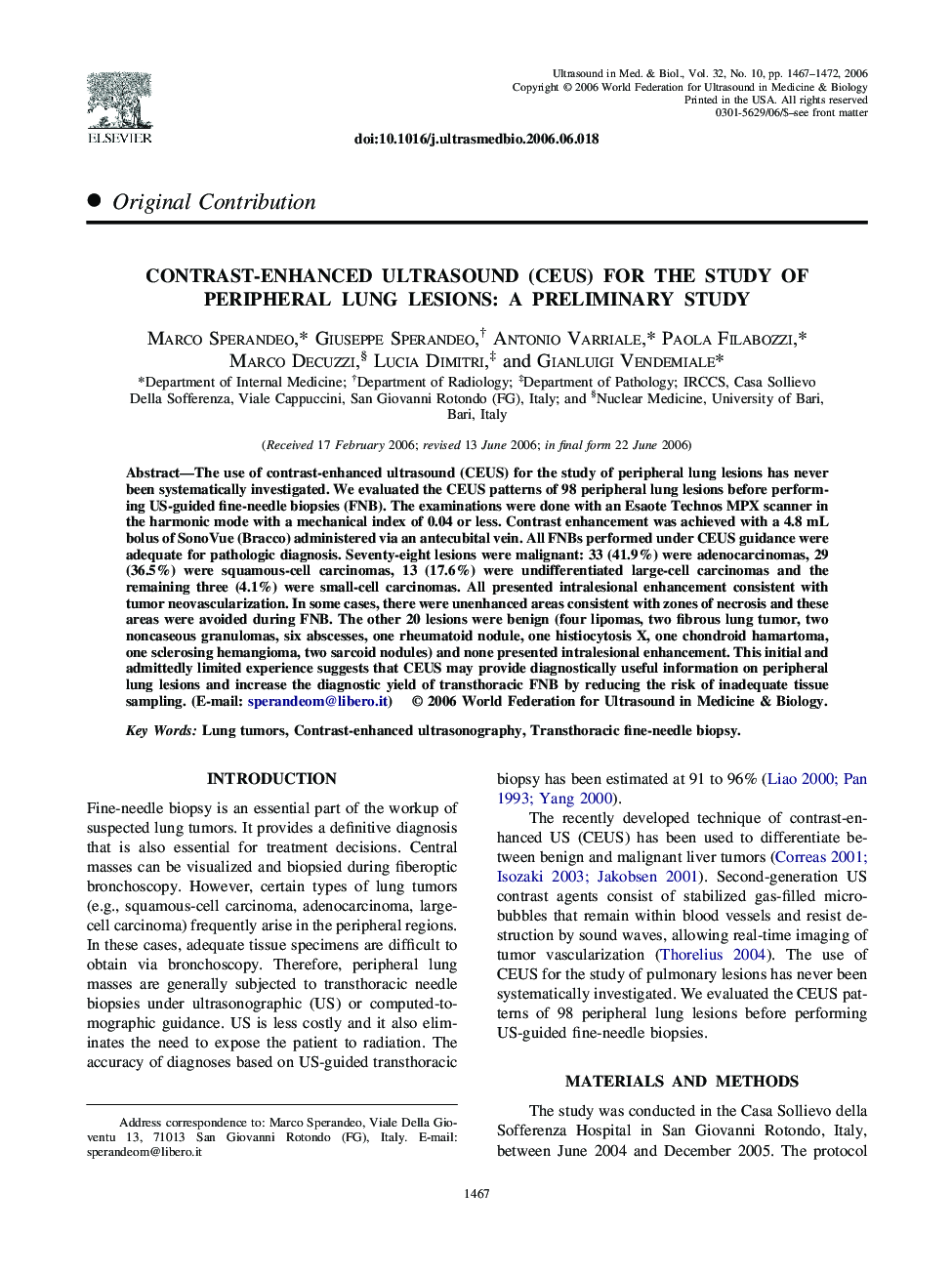| Article ID | Journal | Published Year | Pages | File Type |
|---|---|---|---|---|
| 1762871 | Ultrasound in Medicine & Biology | 2006 | 6 Pages |
Abstract
The use of contrast-enhanced ultrasound (CEUS) for the study of peripheral lung lesions has never been systematically investigated. We evaluated the CEUS patterns of 98 peripheral lung lesions before performing US-guided fine-needle biopsies (FNB). The examinations were done with an Esaote Technos MPX scanner in the harmonic mode with a mechanical index of 0.04 or less. Contrast enhancement was achieved with a 4.8 mL bolus of SonoVue (Bracco) administered via an antecubital vein. All FNBs performed under CEUS guidance were adequate for pathologic diagnosis. Seventy-eight lesions were malignant: 33 (41.9%) were adenocarcinomas, 29 (36.5%) were squamous-cell carcinomas, 13 (17.6%) were undifferentiated large-cell carcinomas and the remaining three (4.1%) were small-cell carcinomas. All presented intralesional enhancement consistent with tumor neovascularization. In some cases, there were unenhanced areas consistent with zones of necrosis and these areas were avoided during FNB. The other 20 lesions were benign (four lipomas, two fibrous lung tumor, two noncaseous granulomas, six abscesses, one rheumatoid nodule, one histiocytosis X, one chondroid hamartoma, one sclerosing hemangioma, two sarcoid nodules) and none presented intralesional enhancement. This initial and admittedly limited experience suggests that CEUS may provide diagnostically useful information on peripheral lung lesions and increase the diagnostic yield of transthoracic FNB by reducing the risk of inadequate tissue sampling. (E-mail: sperandeom@libero.it)
Related Topics
Physical Sciences and Engineering
Physics and Astronomy
Acoustics and Ultrasonics
Authors
Marco Sperandeo, Giuseppe Sperandeo, Antonio Varriale, Paola Filabozzi, Marco Decuzzi, Lucia Dimitri, Gianluigi Vendemiale,
